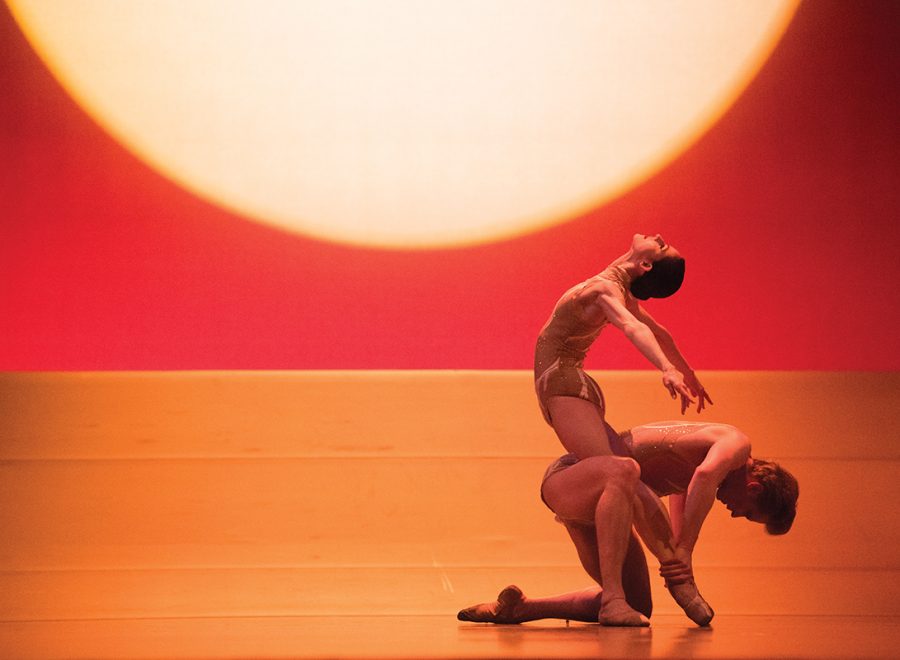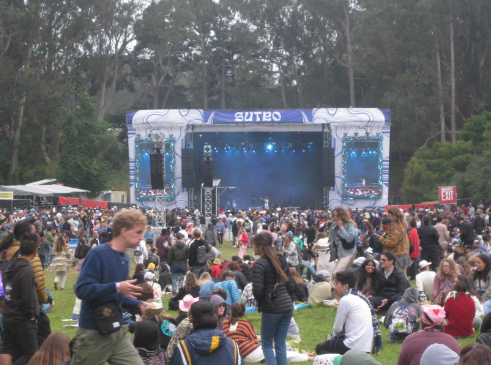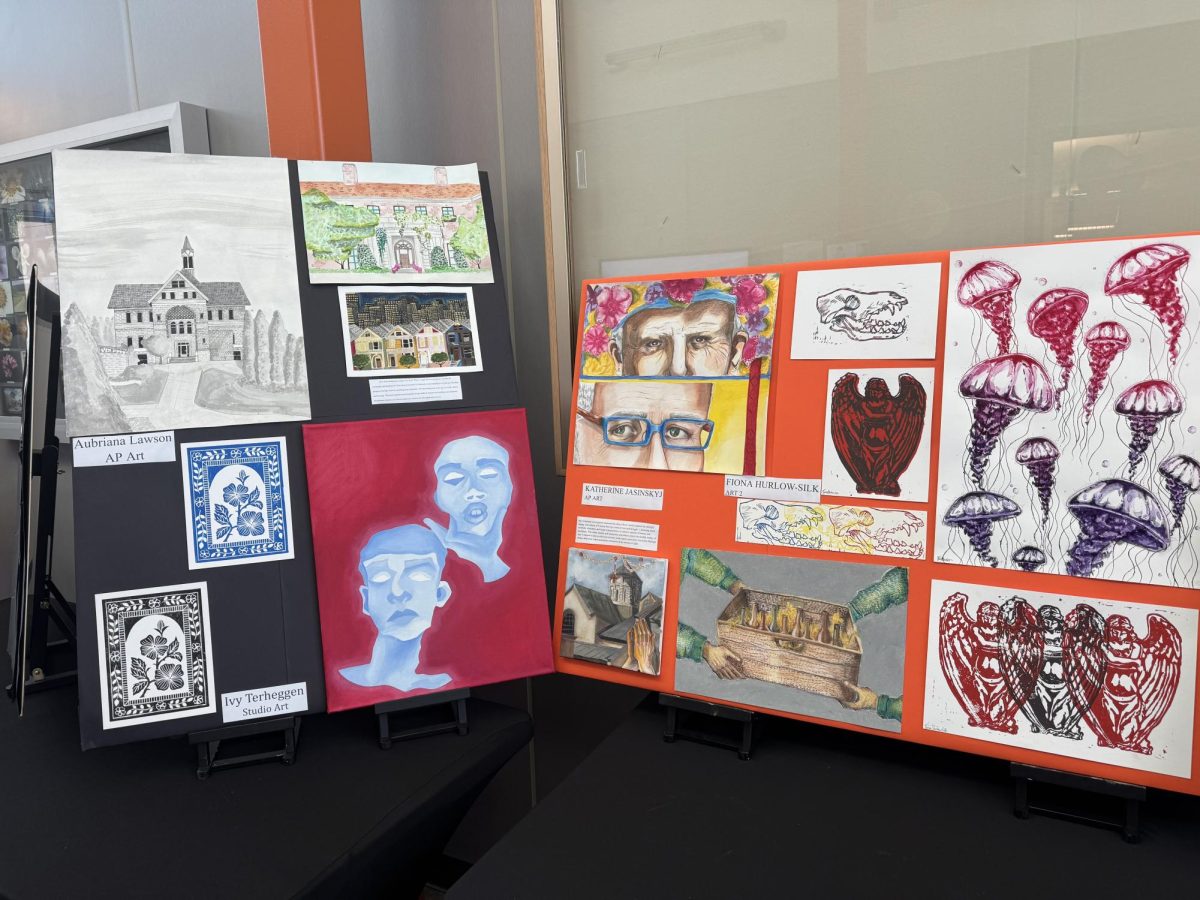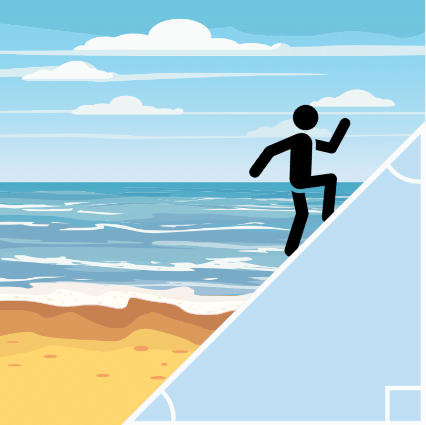San Francisco Ballet’s “Dance Innovations,” the third program in its 2020 Repertory Season, consisted of three ballets that reflected the emotional, philosophical values of the choreographers through the smooth ballet movements.
Although I am not an expert in ballet, after my first visit to see San Francisco Opera House’s “Nutcracker” on Christmas Eve, I fell in love and signed up to be an usher. The second time I was ushering on February 15, I watched “Dance Innovations,” a collection of three different, yet simultaneously similar pieces. “The Infinite Oceans” and “The Big Hunger” both focused on spiritual importance, while “Etudes” was a combination of ballet warmup exercises, which are esteemed rituals for dancers.
“The Infinite Ocean” was the introduction of the “Dance Innovations” program. Originally created for the Unbound festival in 2018, “The Infinite Ocean” is choreographer Edwaard Liang’s third work for San Francisco Ballet. The ballet details the inextricable binding between life and death and when it’s time for spiritual perception. The inspiration for the creation of this art piece comes from Liang’s personal experience with losing his father due to cancer. Later, the same fate befell his friend, and, in a Facebook message, Liang wrote, “I will see you on the other side of the infinite ocean.” Certainly, inner empathy and his passion to show his vulnerability added to the performance, as well as a perfect selection of music. Liang wanted to add a violin concerto for his ballet and worked with composer Oliver Davis. In my opinion, the music added some drama and romanticism to the idea of transitioning from life to death. The ballet centered around a young couple who feared to leave their physical bodies and go into the abyss of another world. The woman could not accept the fact that she would leave her body and walk to the unknown. All the other dancers surrounded her as restless thoughts before her soul; meanwhile, the man stared into the eyes of death and let go of his earthly life to live a life “on the other side of the ocean.”
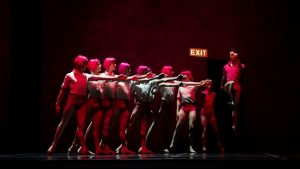
San Francisco Ballet in Trey McIntyre’s “The Big Hunger”
The second piece, “The Big Hunger,” first caught my attention with the choice of colors for the dancers’ costumes, which were created by designer Thomas Mike. An extraordinary work of art choreographed by Trey McIntyre, the ballet explains the importance of understanding the meaning of life and justifying all the things that we do. “The Big Hunger” was created due to McIntyre’s acquaintance with the film “Burning,” which is based on a short story by Haruki Murakami. Here we can see the connection between film and ballet because the main characters in the film have a rhetorical conversation about two hungers of life. The little hunger refers to a physical need for nourishment, and the big hunger is viewed as an “existential search for purpose.” In the dark stage, a bright green “exit” sign shows an abstract explanation that there is always a solution for any challenging situations. It also refers to the idea that there is an end for everything, a spiritual concept which is very similar to the first piece of the program. In “The Infinite Ocean,” the phobia of death forced characters to reason about the meaning of life and leave their physical bodies to step to the infinite beyond. Similarly, in “The Big Hunger,” three leading couples expressed their unrest to exit and tried to find a safe place without realizing the “exit” door was their destination. Despite such an innovative approach to this ballet, McIntyre did not modernize the music and settled on a classic choice, Russian composer Sergei Prokofiev’s Piano Concerto No. 2. McIntyre wanted to highlight the importance of philosophical and sometimes puzzling questions that people have to think about before they die. However, the ballet was also a colorful experiment in customs: dancers performed in the pink outfit and pink old fashioned bob cut hairstyle, giving the performance a humorous aspect that further distracted from the significant message of the whole ballet.
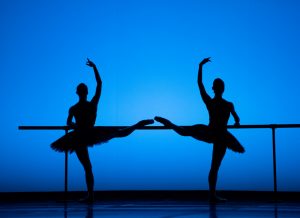
San Francisco Ballet in Lander’s “Etudes”
The third ballet’s plot does not have any aspects of soul transitioning; on the contrary, “Etudes” was created in the early ‘50s by Harald Lander, and it was first staged at SF Ballet by Johnny Eliasen. On the stage, ballet dancers demonstrated a traditional ballet exercise where they started with warming up their muscles and ended with a more complicated routine, showing how small steps lead to magnificent art masterpieces. The ballerinas were dressed in a typical white dress, which emphasized the idea of simplicity. The main dancers continued their practice at the barre under a dark blue shadow, their silhouettes showing all the subtleties of their work. Interestingly, the dance was originally inspired by composer Knudage Riisager, who observed someone’s piano practice and later shared it with Lander. This piece revealed how a patient beginning and intensive practice leads to phenomenal art.
Personally, I enjoyed seeing an innovative ballet and noticed many differences from a classical ballet like “Nutcracker” or “Cinderella,” where everything is carefully thought-over and tested for centuries. Unlike in those pieces, the audience has to think outside of their box and ask themselves the same questions as the choreographers to understand the meaning.


